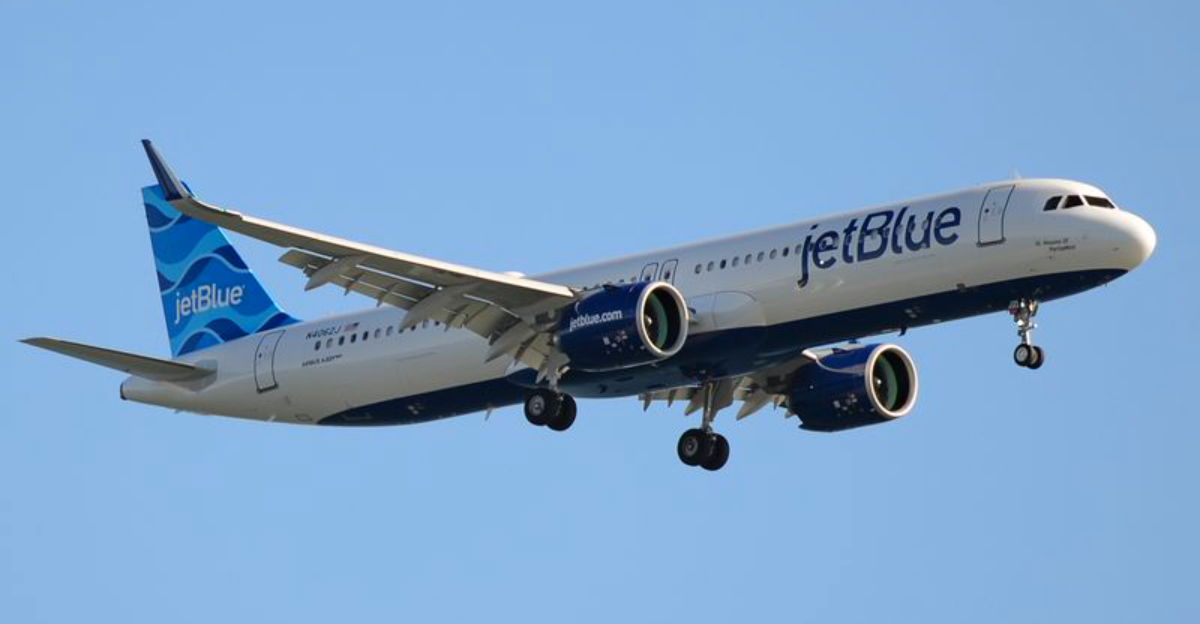A routine flight from Cancun to Newark turned into a nightmare when a JetBlue aircraft experienced a sudden and terrifying altitude drop mid-flight. The plane was forced to make an emergency landing in Tampa, leaving several passengers injured and others shaken. Understanding what happened and how to stay safe during flight emergencies can help travelers prepare for unexpected situations and know what to do when things go wrong.
JetBlue Flight’s Sudden Plunge Triggers Panic Mid-Air
Passengers aboard a JetBlue flight expected a smooth journey from sunny Cancun to Newark. Instead, they experienced every traveler’s worst fear when the Airbus A320 suddenly dropped in altitude without warning. The aircraft was cruising normally when the unexpected descent threw the cabin into chaos.
JetBlue officials confirmed the emergency landing was necessary to protect everyone on board. The Federal Aviation Administration immediately began investigating what caused this frightening incident. Both agencies are working together to understand why the plane dropped so suddenly and ensure it doesn’t happen again to other flights in the future.
Several Passengers Hospitalized After Hard Drop
Multiple travelers needed immediate medical attention after the plane touched down safely in Tampa. JetBlue confirmed that several people were transported to nearby hospitals for treatment. Pilots radioed air traffic controllers during the descent, reporting at least three individuals with possible lacerations from the violent motion.
Back and neck injuries were common among passengers due to the sudden force of the drop. Even those wearing seatbelts weren’t fully protected from the impact. Medical teams worked quickly to assess everyone’s condition and prioritize those needing urgent care, ensuring injured passengers received proper treatment as soon as possible after landing.
We Just Dropped – Passenger Describes Terrifying Moment
Terrica Turner was sitting near the back when everything went wrong. She watched in horror as a flight attendant and the beverage cart suddenly launched into the air. A loud bang echoed through the cabin as objects and people collided with the ceiling.
Turner herself was thrown upward for nearly eight seconds despite wearing her seatbelt. Her head slammed against the overhead bin before gravity pulled her back down hard into her seat. She compared the sensation to the most extreme roller coaster drop imaginable, explaining that even buckled in, she felt completely unsafe during those terrifying moments in the air.
Emergency Response and Onboard Chaos
Once the aircraft was safely on the ground in Tampa, medical personnel rushed aboard to help. Passengers remained seated on the hot tarmac for approximately 90 minutes while paramedics moved through the cabin. They carefully evaluated each person’s injuries and determined who needed immediate hospital care.
The scene was unsettling as several travelers were wheeled off in wheelchairs. Others wore neck braces to stabilize potential spinal injuries. Some passengers were so badly hurt they had to be carried out on gurneys, highlighting just how violent the altitude drop had been and how serious the injuries were for those unlucky enough to be unsecured or in vulnerable positions.
Calm Weather, Possible Flight Control Issue Under Review
Weather wasn’t to blame for this frightening incident. Pilots reported clear skies and calm conditions at the time of the altitude loss. Air traffic control recordings suggest the problem stemmed from a flight control issue rather than turbulence or bad weather.
This revelation makes the incident even more concerning for aviation safety experts. The Federal Aviation Administration has launched a thorough examination of the aircraft’s systems. Investigators are analyzing flight data recorders, maintenance records, and the plane’s mechanical components to pinpoint exactly what malfunctioned. Understanding the root cause is critical to preventing similar incidents and keeping future passengers safe on all flights.





